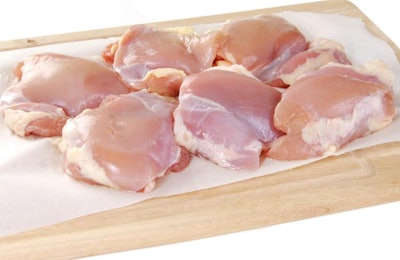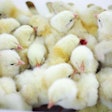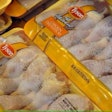
The U.S. Department of Agriculture (USDA) Food Safety and Inspection Service (FSIS) has released a report that identifies which poultry plants met, exceeded or failed to meet the FSIS performance standards for Salmonella control.
The report revealed good news in that nearly all of the Top Broiler Companies in the United States had plants that well exceeded the Salmonella control standards by achieving 50 percent or less of the maximum allowable percent positive during the most recent period of evaluation (October 29, 2017, to October 27, 2018). But it also indicated improvements still need to be made in the industry, as more than half of the top companies in the U.S. had at least one facility that exceeded the maximum allowable percent positive during the same testing period.
Plants evaluated were placed in three categories. The first category identifies the plants that achieved 50 percent or less of the maximum allowable percent positive. The second category identifies the plants that met the maximum allowable percent but had results greater than 50 percent. The third identified the plants that exceeded the maximum allowable percent.
This report will include the plants operated by broiler companies listed in the WATTAgNet Top Companies Database that achieved 50 percent or less of the maximum allowable percent and those that failed to meet the maximum allowable percentage. Plants operated by top companies that were listed in the middle category, as well as the performance of plants operated by smaller companies can be found on the FSIS website.
Some cities where plants operate are listed twice. The FSIS website differentiates plants by product class.
FSIS also evaluated Salmonella control at turkey plants. A separate report on how the Top Turkey Companies performed also appears on WATTAgNet.com.
Top Broiler Company plants that exceeded expectations
Broiler plants to achieve 50 percent or less of the maximum allowable percent positive for Salmonella presence that were operated by Top Poultry Companies, identified by company and location, are listed below. Companies and their plants are listed in no particular order.
- Green Forest, Arkansas
- Dexter, Missouri
- Nashville, Arkansas
- Wilkesboro, North Carolina
- New Holland, Pennsylvania
- Pine Bluff, Arkansas
- Sedalia, Missouri
- Union City, Tennessee
- Dardanelle, Arkansas
- Cumming, Georgia
- Springdale, Arkansas
- Seguin, Texas
- Corydon, Indiana
- Monett, Missouri
- Noel, Missouri
- Shelbyville, Tennessee
- Carthage, Texas
- Broken Bow, Oklahoma
- Vienna, Georgia
- Robards, Kentucky
- Green Forest, Arkansas
- Van Buren, Arkansas
- Forest, Mississippi
- Center, Texas
- Albertville, Alabama
- Monroe, North Carolina
- Carthage, Mississippi
- Waldron, Arkansas
- Temperanceville, Virginia
- Clarksville, Arkansas
- Hope, Arkansas
- Selbyville, Delaware
- Lumber Bridge, North Carolina
- Millsboro, Delaware
Pilgrim’s Pride
- Moorefield, West Virginia
- Ellijay, Georgia
- Gainesville, Georgia
- Guntersville, Alabama
- Lufkin, Texas
- Carrollton, Georgia
- Arcadia, Wisconsin
- Mount Pleasant, Texas
- Athens, Georgia
- Sanford, North Carolina
- Chattanooga, Tennessee
- Natchitoches, Louisiana
- Enterprise, Alabama
- Hickory, Kentucky
- Russellville, Alabama
- Timberville, Virginia
- Cold Spring, Minnesota
- Arcadia, Wisconsin
Empire Kosher
- Mifflintown, Pennsylvania
Agri Star Meat and Poultry
- Postville, Iowa
Foster Farms
- Livingston, California
- Fresno, California
- Farmerville, Louisiana
- Kelso, Washington
Mar-Jac Poultry
- Gainesville, Georgia
- Hattiesburg, Mississippi
OK Foods
- Heavener, Oklahoma
- Albertville, Alabama
- Fort Smith, Arkansas
Wayne Farms
- Pendergrass, Georgia
- Dobson, North Carolina
- Union Springs, Alabama
- Danville, Arkansas
- Decatur, Alabama
- Albertville, Alabama
- Dothan, Alabama
- Jack, Alabama
- Laurel, Mississippi
George’s Inc.
- Springdale, Arkansas
- Harrisonburg, Virginia
Sanderson Farms
- Laurel, Mississippi
- Hazlehurst, Mississippi
- Hammond, Louisiana
- Bryan, Texas
- Moultrie, Georgia
- Waco, Texas
Golden-Rod Broilers
- Cullman, Alabama
Case Farms
- Morgantown, North Carolina
- Dudley, North Carolina
- Canton, Ohio
Peco Foods
- Batesville, Arkansas
- Canton, Mississippi
- Tuscaloosa, Alabama
- Bay Springs, Mississippi
- Sebastopol, Mississippi
- Brooksville, Mississippi
- Pocahontas, Arkansas
Koch Foods
- Morristown, Tennessee
- Ashland, Alabama
- Gadsden, Alabama
House of Raeford Farms
- West Columbia, South Carolina
- Teachey, North Carolina
- Rose Hill, North Carolina
- Greenville, South Carolina
Gentry’s Poultry
- Ward, South Carolina
Simmons Foods
- South West City, Missouri
- Decatur, Arkansas
Perdue Foods
- Rockingham, North Carolina
- Milford, Delaware
- Georgetown, Delaware
- Petaluma, California
- Lewiston Woodville, North Carolina
- Cromwell, Kentucky
- Perry, Georgia
Fieldale Farms
- Cornelia, Georgia
- Murrayville, Georgia
Holmes Foods
- Nixon, Texas
Amick Farms
- Hurlock, Maryland
- Batesburg, South Carolina
Tecumseh Poultry
- Tecumseh, Nebraska
- Waverly, Nebraska
Ozark Mountain Poultry
- Batesville, Arkansas
- Rogers, Arkansas
Farmers Pride
- Fredericksburg, Pennsylvania
Top Poultry Company plants that failed to meet standards
Broiler plants that exceeded maximum allowable percent positive for Salmonella presence that were operated by Top Poultry Companies, identified by company and location, are listed below. Companies and their plants are listed in no particular order.
Tyson Foods
- Center, Texas
- Monroe, North Carolina
Hain Pure Protein
- Fredericksburg, Pennsylvania
Perdue Foods
- Salisbury, Maryland
- Monterey, Tennessee
- Rockingham, North Carolina
- Georgetown, Delaware
- Accomac, Virginia
- Dillon, South Carolina
- Cromwell, Kentucky
- Perry, Georgia
Allen Harim Foods
- Harbeson, Delaware
Pilgrim’s Pride
- Canton, Georgia
- Live Oak, Florida
- Moorefield, West Virginia
- Guntersville, Alabama
- Athens, Georgia
- Douglas, Georgia
- Chattanooga, Tennessee
Claxton Poultry Farms
- Claxton, Georgia
Koch Foods
- Chattanooga, Tennessee
- Forest, Mississippi
- Montgomery, Alabama
- Gadsden, Alabama
- Gainesville, Georgia
- Morristown, Tennessee
- Cumming, Georgia
House of Raeford Farms
- Arcadia, Louisiana
Sanderson Farms
- Waco, Texas
- Kinston, North Carolina
- Palestine, Texas
- St. Pauls, North Carolina
Simmons Foods
- Van Buren, Arkansas
Fieldale Farms
- Gainesville, Georgia
- Murrayville, Georgia
Wayne Farms
- Dobson, North Carolina
Mar-Jac Poultry
- Hattiesburg, Mississippi
- Jasper, Alabama
Harrison Poultry
- Bethlehem, Georgia
George’s Inc.
- Edinburg, Virginia
- Springdale, Arkansas
Amick Farms
- Batesburg, South Carolina
Gerber Poultry
- Kidron, Ohio
Case Farms
- Canton, Ohio
National Chicken Council responds
Tom Super, senior vice president of communications for the National Chicken Council, when asked to respond to the report, stated: "Food safety is the top priority for companies that produce and process chicken in the United States, and the industry prides itself on an excellent track record of delivering safe, affordable and nutritious food both domestically and abroad. Americans eat about 160 million servings of chicken every day, and virtually all of them are eaten safely. We take the safety of chicken very seriously – our families eat the same chicken as you and yours."
He pointed out that there are several things to consider when reviewing the performance of inspected poultry plants, including:
- The method by which FSIS categorizes establishments is not reflective of process control nor necessarily reflective of current in-plant conditions, because of the 52-week rolling window.
- The agency has changed its category calculation by using one 52-week window instead of 13 52-week windows. While this is an improvement in the calculation, one sample per week may not accurately reflect process control, and further, there are many establishments that are not being sampled weekly which puts them at a potential disadvantage.
- Eighty-five percent of plants nationwide are meeting or exceeding the performance standard for whole birds and 73 percent are meeting or exceeding it for chicken parts. According to FSIS data, the incidence rate of Salmonella on chicken parts has decreased 36 percent since April 2015.
- Not only does FSIS take samples in testing for pathogens, but the establishments themselves perform the same tests but at a much greater frequency. Most plants take well over 50 to 100 times more samples than does FSIS to ensure they are maintaining process control.
- But performance standards and testing alone do not ensure the safety of chicken. Testing is only one tool in the food safety toolbox. Plants employ dozens of intervention strategies as part of their food safety program including rigorous sanitation practices, various rinses and washes that cleanse the chicken reducing any potential foodborne pathogens or bacteria, and keeping the meat at the proper cool temperature, among other measures as part of a plant’s HACCP plan.
Super also notes that, although the poultry industry has collectively made tremendous progress in reducing Salmonella, any raw chicken is not sterile, and any raw agricultural product, whether its fresh fruit, vegetables, fish, meat or poultry, is susceptible to naturally occurring bacteria that could make someone sick if improperly handled or cooked.
















